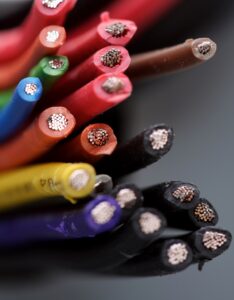Congratulations – you’ve done all your homework, reviewed vendors, purchased your equipment and worked through all the design challenges – job done? Not really, now all your attention turns to getting it successfully delivered and properly installed in your facility. Truth be told, these are all details that you should have already long finalized and now simply ready to execute.
However, let’s discuss some of these important areas that you should be reviewing leading up to your delivery and installation. By performing a few of these necessary steps, you’re ensuring a smooth equipment installation and quick return to production.
 Communication is Key
Communication is Key
Communication is key for business or life in general, but successfully receiving capital equipment can be fraught with unknown pitfalls. When preparing for a machine installation, you will want to stay in contact with key players: Project Manager, Manufacturing and Assembly, and Packaging Technicians that you will be working with.
This also includes the Freight company delivering your machine, as well as all of your internal involved personnel.
For the most part, your primary contact will be your Project Manager. They will help coordinate the vast majority of details and will successfully maintain a finger on the pulse of things.
Scheduling
Make sure you have your equipment installation setup involving the appropriate personnel from Technical Service/Service during the visit. When you get your new packaging machine, you will want it up and running as soon as possible.
When the technician is on-site for installation, please use this opportunity to ask any/all questions regarding setup, installation, changeovers, and best practices as it pertains to your new equipment. It is a very good opportunity for your team to learn as much as possible about your new system from experienced visiting personnel during this period of time.
System Requirements

Do you know if your equipment requires compressed air, air filtration, dryers, or have specific electrical needs? Again, these are usually requirements that you have long covered and should be in-place ready to receive and start the formal equipment installation process.
- Electrical: watts, voltage, required amps, single-phase, three-phase, and overall power ratings
- What does the system require
- What does your facility already have in-place
- Does your facility need to update any areas to accommodate the equipment
- Compressed air: if required, how much PSI, what is the required CFM
- What does the system require
- What does your facility already have in-place
- Does your facility need to update any areas to accommodate the equipment
Other things to be aware of:
- Lighting: make sure there is ample lighting for anyone using the machine
- Communication cables: does your new machine need ethernet cables or other types of connectivity?
Required Spacing and Footprint Needs
During the installation of your liquid filling equipment, you may need to move a few things around to get your equipment exactly in its proper location. Moving a machine from Point A to Point B may sound simple; however, in some instances it can require great deal of effort and cost.
For example, during an actual delivery and installation of a ProLINE fill-cap-label system, once the equipment arrived there were no shipping docks or forklifts available for the shipper to unload the cargo. Certain elements of the system needed to be removed, taken apart, to get it on the freight elevator so we could deliver the equipment to “its location on the 7th floor”. As for how the story goes, the “7th floor” was also a detail unknown until delivery day.
The moral of the story is… be sure to understand the full range of details if/when shipping or when receiving a new piece of equipment. Of course, this also falls under the earlier subject of communication. These are all considerations that you will need to think about when moving new packaging equipment into place.
Testing Production
Once your new machine is in place, have the rest of your production line and technicians install, train and be prepared for your test production runs. You may/may not want to use live product for your test runs, but have them readily available so you can test your machine quickly and efficiently. The goal is to execute a successful, real production scenario so you are confident in the setup, installation and training that you have received.
 Schedule a Follow-Up Call
Schedule a Follow-Up Call
We think it makes great sense to schedule a brief follow-up call to review status of equipment and address any/all questions on best practices in operation. Simple measures like this can keep things on the radar, keeping you ahead of the curve, and not waiting until the last minute or when something happens to schedule an emergency call.
General maintenance, following equipment guidelines, and using best practices are sure-fire ways of extending the life of your liquid filling equipment.
Liquid Filling Machine Specialists
For over 70 years, FILAMATIC has been providing a wide range of liquid filling systems to the packaging industry. We create flexible, customized solutions for every stage of your business growth. Whether you require a single handheld filling machine, a complete turnkey fill-cap-label solution, or a fully automated, integrated filling system, we have the liquid filling experience to ensure your satisfaction is exceeded.
For more information on liquid filling, capping and labeling solutions, please call 866.258.1914 or email info@filamatic.com.
